New Jersey’s Ospreys: A Symbol of a Healthy Coast ~ Part II
- Link to Part I
- Read full results from last year’s survey in the 2018 NJ Osprey Project Report
- Learn more about our Osprey Project
by Ben Wurst, Habitat Program Manager
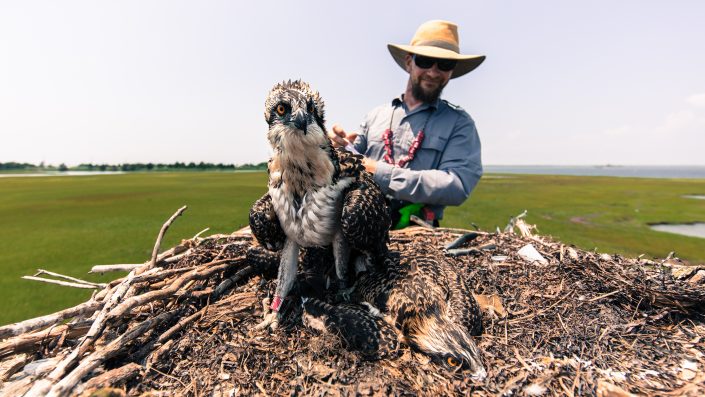
If you live along or visit the coast, then it’s no surprise that ospreys continue to thrive in New Jersey. 2018 was yet another banner year for these coastal nesting raptors. Their large stick nests depict our rivers and estuaries while they indicate that we’re doing a good job of protecting our local environment along the coast. Today we’ve published results from last year’s nesting season in the 2018 New Jersey Osprey Project Report.
Continue reading “New Jersey’s Ospreys: A Symbol of a Healthy Coast”by Ben Wurst, Habitat Program Manager
On a brisk November morning, a couple dedicated NJ Osprey Project volunteers joined myself and CWF Biologist Larissa Smith to install an osprey platform on the coastal saltmarsh of New Jersey. The new platform was installed to replace a very old and unstable platform that fell this summer. The new structure is more than twice the size of the old one and will give the nesting pair, who return in the spring, a much more resilient nest site. As you can see from the video above, it takes a bit of strength to raise up a 16′ tall wood nest platform. We decided to slow it down when WCC Volunteer, Wayne R. gives it a final push. Continue reading “Video from the Field: Osprey Platform Install”
by Ben Wurst, Habitat Program Manager
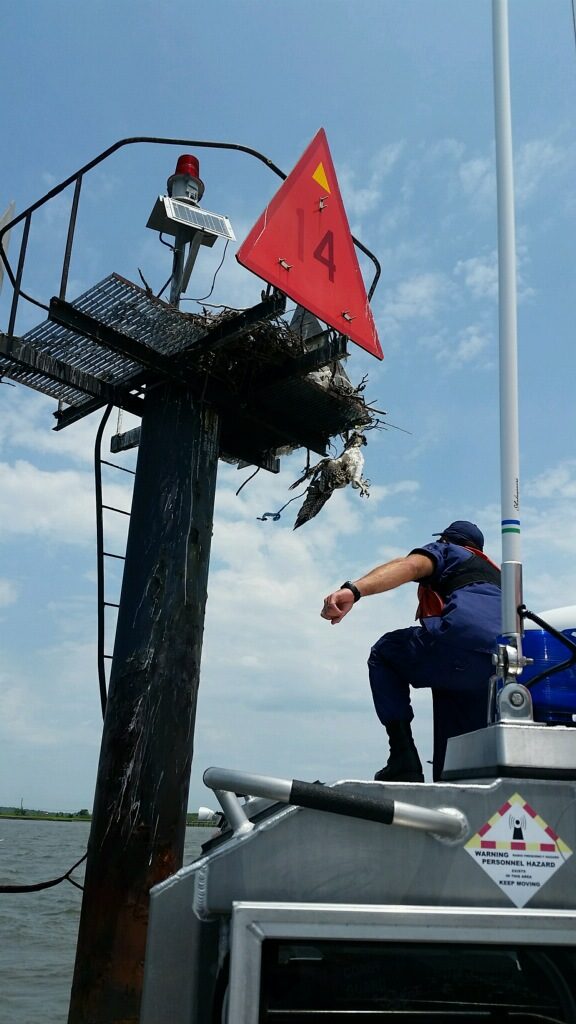
As I work to finalize data from this summer’s osprey surveys, I wanted to look back and highlight an important observation: more plastic is being found and recovered from active osprey nests. I guess it’s no surprise when you hear that “18 billion pounds of plastic waste flows into the oceans every year from coastal regions.” Continue reading “Documenting the presence of plastics in osprey nests”
by Ben Wurst, Habitat Program Manager
When we were contacted to be a part of this LBI centered documentary series, we knew that we couldn’t pass up the opportunity to share some of our work with coastal raptors, like the osprey and peregrine falcon, and their importance in the local environment and economy. In this video you’ll see us banding “Junior,” who hatched at the Jersey City Falcon Cam this spring, but was removed from his nest after being examined and found to be malnourished. We was fostered into the falcon nest at Sedge Island. You’ll also see video of ospreys on their nest at sites surrounding Long Beach Island, and interviews with my friend, and CWF supporter, Northside Jim, and Kathy Clark, ENSP Supervisory Zoologist. Continue reading “Just Beneath the Surface: Junior’s 5 Seconds of Fame”
by Ben Wurst, Habitat Program Manager
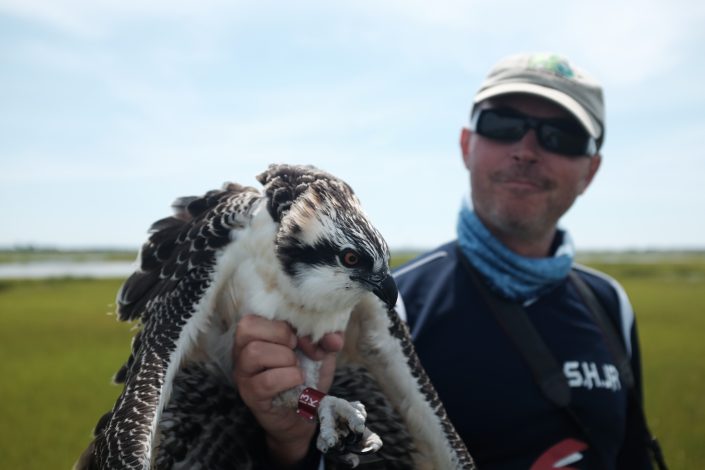
Mid-summer marks the nestling period of nesting ospreys, a coastal raptor, whose diet consists mainly of fish. As a state that’s heavily influenced by its location along the Atlantic Ocean, they play a critical role in our coastal ecosystem. Ospreys are important bioindicators of the health of our coastal waters, through the lens of their prey, where pollutants are biomagnified through the food chain. As we consume many of the same fish, they show the effects of these pollutants long before humans, so the health of their population has implications for our coastal waters and us! Continue reading “2018 Osprey Outlook”
Story by Michelle Gladden, Asbury Park Sun
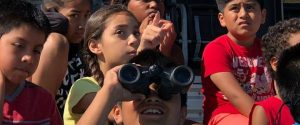
It is only week two of the Conserve Wildlife Foundation (CWF) Summer Learning Experience program, a part of the Asbury Park School District Summer Camp offerings, and third-grade students have had the opportunity to not only see an osprey up close and personal but to visit a local nest and learn to simulate building the predatory bird’s nesting place.
Continue reading “Asbury Park students meet ospreys at high school football field”
Thanks to dedicated Conserve Wildlife Foundation of NJ staff and volunteers three osprey chicks were saved from what could have been an unhappy fate.
NJ Osprey Project Volunteers Matt Tribulski, Wayne Russell and John King were surveying osprey nests in the Wildwood back bay area this past weekend. They checked on a nest with three chicks and found that the platform top was broken and a strong possibility it could collapse, especially with any heavy rains or winds. The chicks weren’t old enough to fly and would have fallen to the marsh and died. Continue reading “Osprey Chicks Get A Necessary “Home” Upgrade”
Story by NJ.com
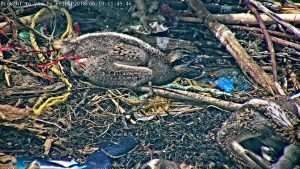
Two volunteer groups and the Seaside Heights public works department teamed to help a baby osprey that had a balloon ribbon tangled around its leg in a nest at Island Beach State Park.
by Ben Wurst, Habitat Program Manager

Around 3% of ospreys who were banded with USGS aluminum bird bands as nestlings in New Jersey are re-sighted after fledging or leaving their nest. Most of those recoveries or resightings are centered around mortality based events where a bird is injured or killed and the band is then close enough to read. Since the numbers on the leg bands are so small, it is often hard to read when they are still alive. However, when enough photos are obtained or a camera is installed on a nest then the likelihood of reading the band on a live bird increases. Continue reading “Identifying “Bandit” at Pete McLain Osprey Cam Nest”